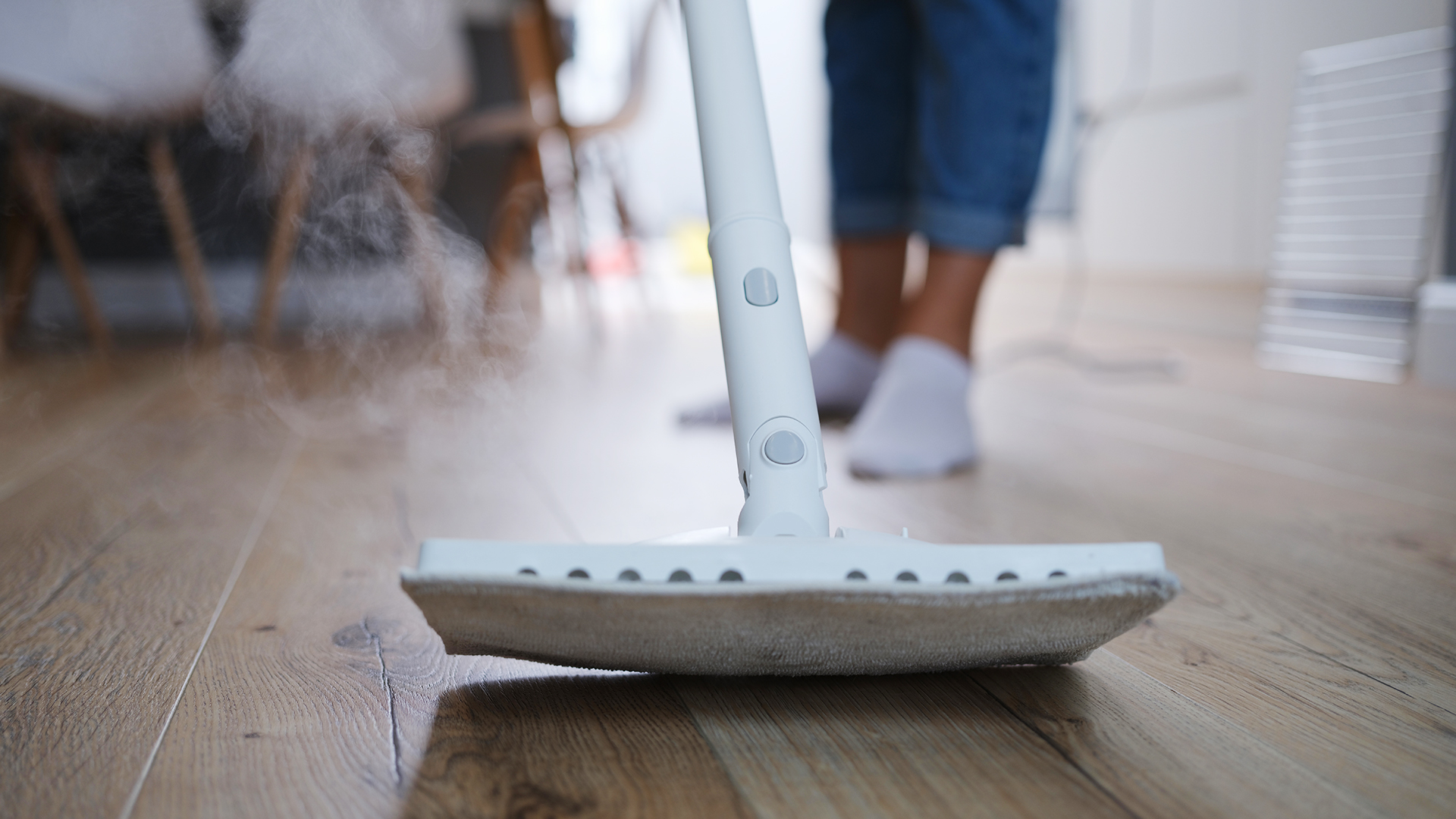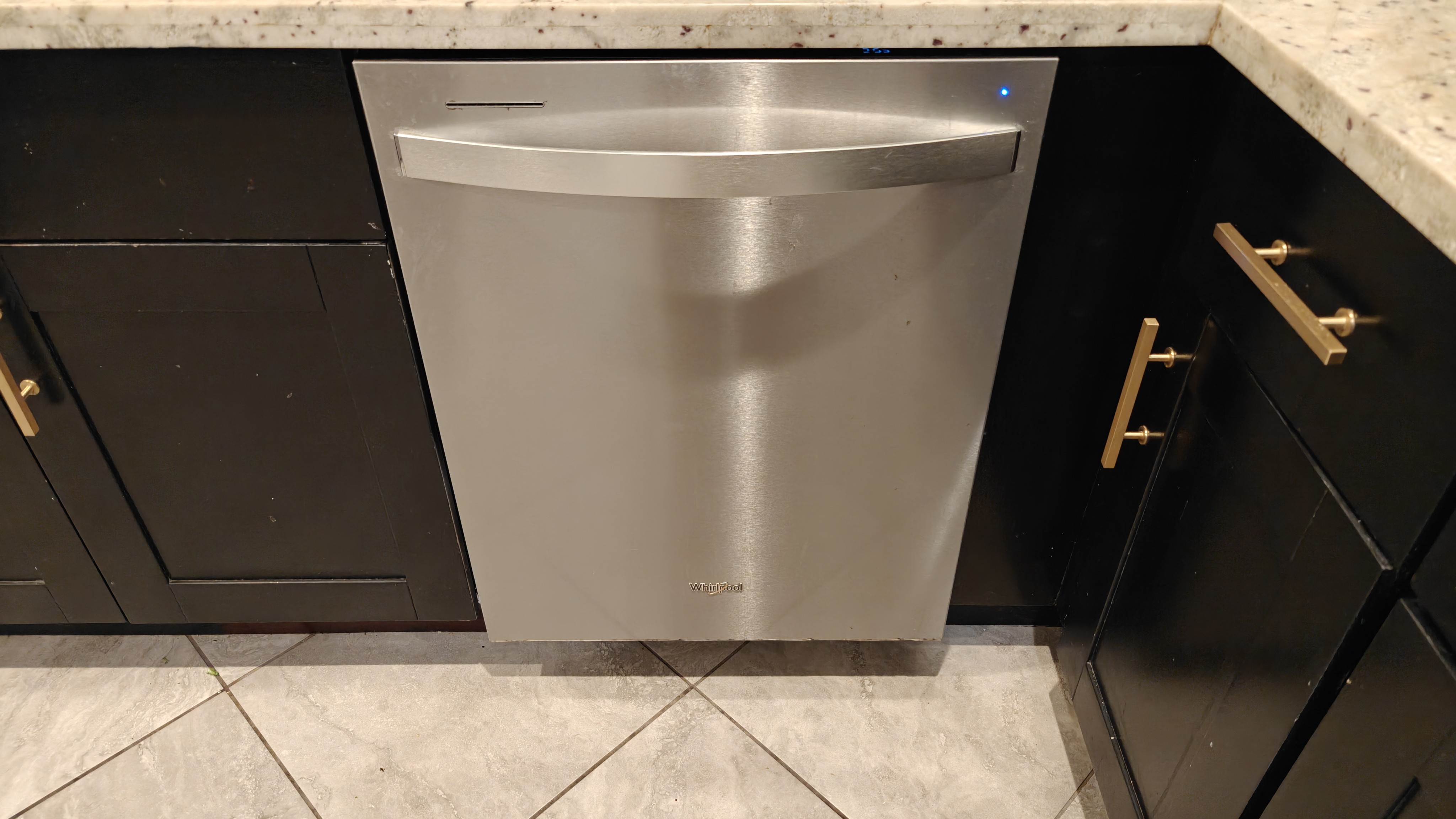Can you use a steam mop on laminate floors?
Explore the best way to use a steam mop on laminate floors to remove everyday dirt and grime from your flooring.

Laminate is known for being easy to clean, and learning to use a steam mop on laminate floors is one way to keep flooring spotless. However, it’s important to proceed cautiously, as the flooring could absorb the moisture the mop produces. This can damage the laminate layers, so care should be taken if using a steam mop on a laminate floor.
Foot traffic from family and pets throughout the day can lead to dirt and grime developing on the surface of a floor. Over time, this dirt can become ingrained and more difficult to remove. When this happens, you might be tempted to reach for a steam mop—but there are a few things to bear in mind before steam cleaning laminate flooring.
The best steam mops are known for helping to keep hard surfaces clean around the house, while the best vacuum cleaners are a great way to keep your floors dust-free for a better wet clean. However, are steam mops truly the best way to keep laminate flooring clean?
How to use a steam mop on laminate floors
Steam mops use a combination of heat and water to clean a floor by effectively loosening any hardened dirt and killing most germs. However, most flooring manufacturers don’t recommend using a steam mop on laminate floors, so if you want to preserve your laminate, you should use a different cleaning method.
However, if you have a steam mop and do want to use it to clean laminate flooring, follow these steps to avoid damaging the surface:
Step 1: Remove loose dirt with a soft brush or vacuum cleaner on hard floor mode.
Step 2: Use a microfiber mop pad that will be gentle on the floor to prevent scratching.
Sign up to receive the latest news, reviews, buying guides and deals direct to your inbox
Step 3: Select the lowest steam setting on the mop.
Step 4: Keep the mop moving, and don’t let it settle in one place.
Step 5: Avoid pressing down too hard on the mop.
Step 6: Ensure the area is completely dry after cleaning with no remaining moisture.
Some laminate flooring is rated for use with steam mops, and if the flooring is waterproof, it may be suitable for steam cleaning. Although these floors are more protected from the potential damage of steam cleaning, repeated cleaning could still cause moisture to penetrate the laminate.
As an alternative way to clean laminate flooring, use a damp cloth or laminate floor solution, and ensure the floor is cleaned daily to prevent any dirt from getting stuck. Regular cleaning will reduce the need for steam cleaning, as stubborn dirt won’t have a chance to build up on the surface. However you choose to clean the floor, always ensure the surface is fully dry before replacing rugs or furniture and walking on it.
Risks of using a steam mop on laminate floors
Andre Kazimerski, CEO of Improovy Painters Plano, says, "It’s not recommended to use a steam mop on laminate floors. However, you can try applying the steam to something like a cloth or rag and then “mopping” the floor with this instead – the direct application of steam is what’s most likely to cause damage.”
Steam mopping is a highly effective way to clean a floor, as the heat and moisture loosen any dirt that has built up from muddy boots, dirty paw prints, or general everyday activities. However, using a steam mop on a laminate floor is not usually recommended. Here’s why it’s best not to use steam to clean laminate flooring:
• The floor will absorb the water. Laminate flooring is made from layers of the board that, when exposed to water, swell, and warp. This causes the floor to buckle and is difficult to fix.
• The adhesive will become damaged. The combination of moisture and heat that makes a steam mop work can loosen the adhesive designed to keep the laminate layers together.
• The mop cannot be used effectively. When steam cleaning laminate flooring, it’s important not to apply too much pressure or let the mop sit in one place for too long, which makes it difficult to quickly and easily clean the floor.
• Any warranty could be void. If your laminate flooring came with a warranty, cleaning it with a steam mop could void this agreement, leaving you facing the costs of repairing the floor.
Hayley Francis is a freelance writer based in the UK with an interest in travel, culture, and the great outdoors. When not busy writing for a variety of clients, she can be found planning her next trip or hiking a new trail.

